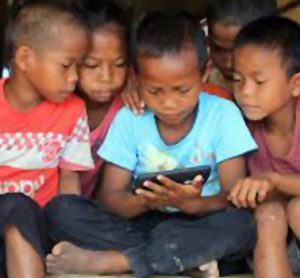Mal Lee
Overnight the corona virus has obliged society and the educational decision makers to rethink the nature of schooling in a connected world – in a way few other events have.
There is a societal focus on the role of schooling, and online education the world has rarely seen.
It has opened the window for the serious consideration of how schools might better genuinely collaborate with their families in the education of the young in a networked society.
The irony is that where only months ago governments were banning digital devices, and supporting schools unilateral control of teaching today that are reliant on those personal devices, the family digital ecosystem and are seemingly wanting to collaborate with the families in the ‘schooling’ of the nation’s young.
Presently the young experience two types of learning with the digital. The structured tightly controlled linear teaching of the school, that distrusts and disempowers the young. And the highly laissez approach used 24/7/365 outside the school walls, where near on 3 billion digitally connected young (UNICEF, 2017) have largely taken control of their use of and learning with the digital (Lee, Broadie and Twining, 2018).
They are diametrically opposite, with the young outside naturally adopting the approach used by 4 billion plus of the worlds digitally connected (ITU, 2018).
Schools and systems globally have seemingly dismissed, or have not noted that global phenomenon, in the main making no effort to recognise, build upon or complement the global connectivity or universal nature of the approach learning employed.
The virus provides the chance for more schools to enhance the nexus between the two, now parallel approaches, and to collaborate with and provide astute support and leadership for the world’s digitally connected families.
But it is only a momentary chance. Already parents, the wider society and teachers are desperately wanting to return to the schooling they know.
Globally there is a small cadre of schools, that after years of astute preparation are demonstrating what is possible.
There are another group doing their utmost with the online despite that lack of preparation.
And likely globally there are schools where the teachers are going out of the way to continue their teaching with a mix of paper and digital resources.
However, most governments and education authorities in announcing the arrangements for their schools during the virus proclaimed they were taking schooling online.
They were taking a 1920 model of schooling, which is strongly site based online, from Kindergarten to Year 12, in every area of learning.
The claim sounded highly assuring in a time of crisis.
The trouble was that in most instances it was a myth, convenient spin.
Literally overnight, with no planning, consultation, staff or community preparation, or infrastructure testing total education systems were through some magic wand waving to move from a wholly site based operation to working online.
Some exceptional schools, that have done the years of preparation have handled the challenge well.
Most however have struggled, with both the concept of teaching in a digital mode, and the logistics of teaching wholly online. One example sighted sought to unilaterally impose a 1920 model of teaching on the lives of all its families, specifying to the minute when students were to switch subjects, and the sanctions that would be applied if they did not.
Glitch after technical glitch has been experienced by near all.
Little is the wonder most are wanting to return to the established ways.
That said maybe this is the cock-up schooling and particularly governments had to have.
What is now patently obvious from the pandemic experience is that physical attendance at a physical place school must be core to schooling forever.
The virus has daily underscored the critical role schools play in allowing young parents to work.
A related reality is that a century of unsuccessful school change has affirmed that the core structure of schooling will rarely, if ever be changed.
It is possible to make and sustain change within those 1920 structures, but – and it is a vital ‘but’ – it is virtually impossible to achieve sustained structural change in schools. History over the century has continually affirmed the attitudinal, political, structural, educational, legislative, legal, cultural, logistical and societal constraints to be overcome.
While it is pleasing to note is the number of commentators urging schooling take advantage of the virus to introduce fundamental change all fail to grasp how tightly the standard model of schooling is woven into the fabric of modern society.
Change can, and has been made within the existing structures.
That is where to take advantage of the jolt provided by the corona virus. The culture can be changed, a digitally based school ecosystem grown, control of the teaching and learning can be distributed, genuine collaboration can occur between the schools and families and a greater nexus established between the in and out of school use of the digital.
Work on the reality that society will expect the kids to go school, and return home at a set time each day, five days a week, for X days of the year, and break for holidays in the same weeks each year.
And just maybe some of the opportunities opened by the pandemic will be realised.
Just maybe governments will better understand how central personal devices, family digital ecosystems and digitally connected families are to the 24/7/365 learning of the young, and just maybe when schools return to the standard model governments will still want to genuinely collaborate with the families of the young.
- ITU (2018) Measuring the Information Society Report. Volume 1, 2018.Geneva. International Telecommunications Union. https://www.itu.int/en/ITU-D/Statistics/Pages/publications/misr2018.aspx
- Lee, M. Broadie, R and Twining, P (2018) Your Kids Being Digital. A Guide for Digitally Connected Families.Armidale Australia Douglas and Brown
- UNICEF (2017) Children in a Digital World. UNICEF December 2017 – https://www.unicef.org/publications/files/SOWC_2017_ENG_WEB.pdf







